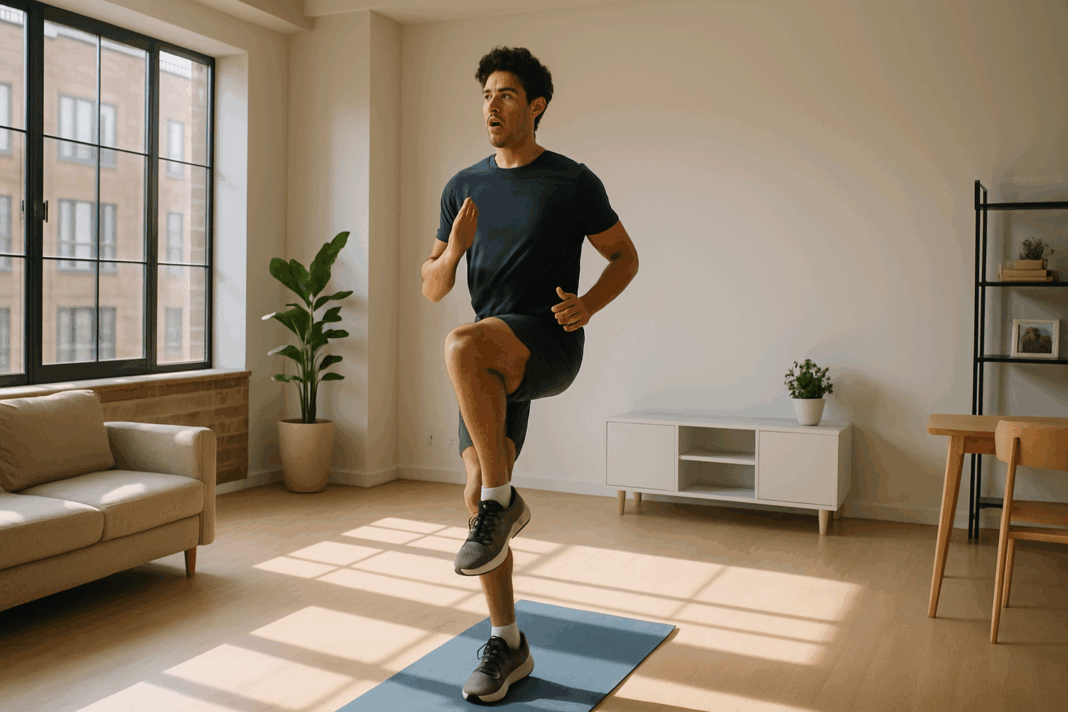In today’s fast-paced world, carving out time and space for physical activity can be an ongoing challenge. Urban living, small apartments, and packed schedules often mean that access to large gyms or outdoor tracks is limited. Yet the benefits of cardiovascular exercise are too significant to overlook. Fortunately, it is entirely possible to perform effective aerobic workouts within confined spaces without sacrificing results. This article explores expert-endorsed strategies, techniques, and science-backed approaches to achieving endurance and stamina through cardio workouts in small spaces, focusing on the unique advantages and nuances of aerobic exercise in limited environments.
You may also like: How to Increase Stamina and Endurance Naturally: Smart Training Tips and Nutrition Habits That Support Cardiovascular Fitness

Why Cardio Workouts in Small Spaces Matter
The need for flexibility in modern fitness routines has never been more urgent. With remote work becoming commonplace and living spaces shrinking, fitness solutions that adapt to spatial constraints are essential. Cardio workouts in small spaces present an efficient, accessible way to support heart health, manage weight, and improve mood—all without requiring bulky equipment or expansive rooms. These workouts are particularly relevant for students, professionals, and older adults who might not have the resources or physical capacity for outdoor running or gym-based routines.
Moreover, limited space cardio workouts are not merely a compromise; they can offer distinct benefits. By focusing on bodyweight movements and dynamic routines, individuals can increase proprioception, functional strength, and metabolic conditioning. High-intensity interval training (HIIT), low-impact aerobic sequences, and controlled breathing techniques can all be incorporated into tight quarters while still delivering comprehensive cardiovascular conditioning. As we’ll discuss, the constraints of space can often foster creativity and precision in movement, leading to highly effective training sessions.
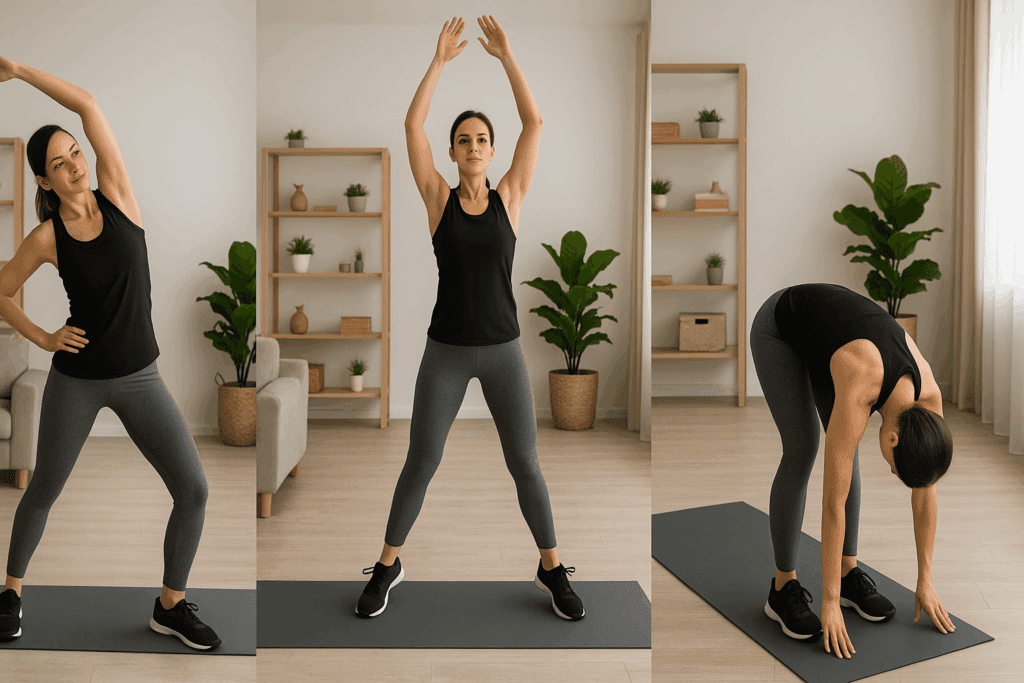
The Science Behind Aerobic Exercise in Small Space Settings
Aerobic exercise, by definition, engages large muscle groups in a rhythmic, sustained manner that elevates heart rate and improves the efficiency of the cardiovascular and respiratory systems. Traditionally, this conjures images of jogging, cycling, or swimming—activities that require significant space or infrastructure. However, scientific literature affirms that similar physiological adaptations can occur with well-designed routines performed in limited space.
One key element is intensity. Research shows that shorter bouts of high-intensity activity can elicit comparable, if not superior, cardiovascular benefits compared to longer-duration, moderate-intensity workouts. This makes small-space cardio not just feasible, but optimal in many cases. Another factor is consistency. Having the ability to train from home or a compact area increases the likelihood of regular exercise, which is a critical determinant of long-term cardiovascular health. Structured routines tailored to small environments can leverage bodyweight resistance, plyometric sequences, and agility drills to provide holistic aerobic stimulation without requiring movement across large distances.
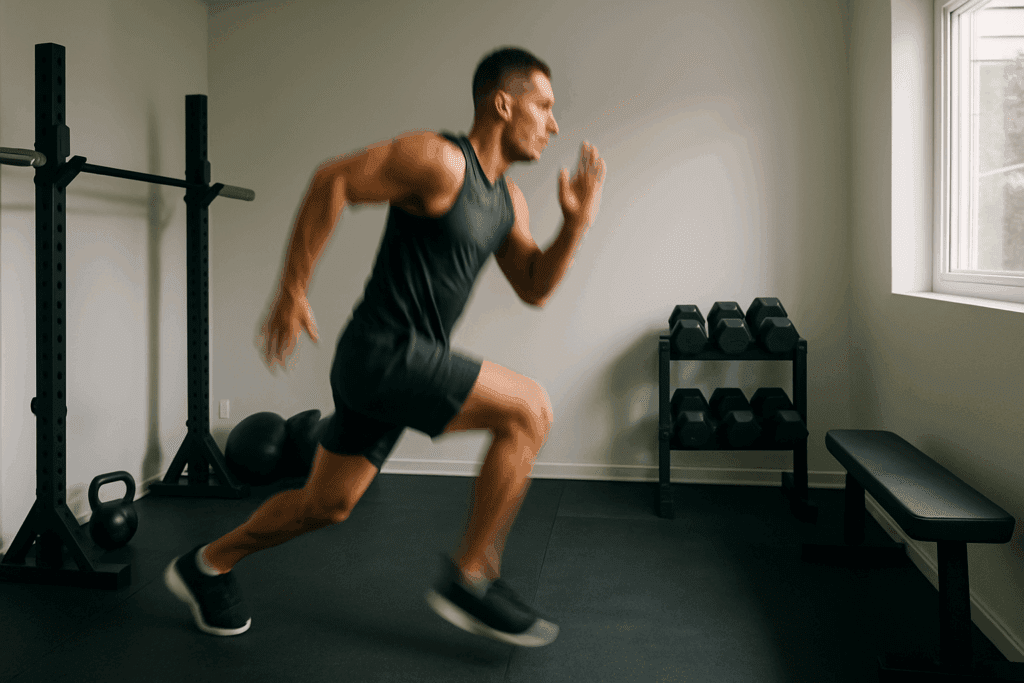
Designing the Perfect Limited Space Cardio Workout
Creating an effective workout for small areas requires a balance of movement selection, sequencing, and time management. Start by considering exercises that require minimal lateral or forward motion. For example, jumping jacks, high knees, mountain climbers, and squat jumps can all be performed in place but deliver substantial aerobic stimulation. Pairing these with core-focused moves like plank variations or standing oblique crunches enhances total-body activation and prevents muscular imbalances.
Time-based structures such as EMOM (Every Minute On the Minute) or Tabata (20 seconds work, 10 seconds rest) are ideal for limited space cardio workouts. These formats promote sustained effort without the need for complex spatial transitions. Additionally, warm-up and cool-down components should not be neglected. A dynamic warm-up might include arm swings, leg circles, and marching in place, while the cool-down could involve static stretches and deep breathing to aid recovery.
By customizing intensity, duration, and rest intervals, individuals can tailor routines to match their fitness level and space constraints. This approach is not only practical but encourages body awareness and discipline, key traits in performance enhancement.
Maximizing Endurance with Bodyweight Aerobics
One of the most effective ways to boost endurance in tight quarters is through bodyweight aerobics. These routines utilize the body’s natural resistance to elevate heart rate and engage multiple muscle groups simultaneously. Movements like burpees, skaters, and jumping lunges create dynamic cardiovascular demands while also promoting muscular endurance.
The beauty of aerobic exercise in small space formats is that they can be scaled to accommodate all fitness levels. Beginners might start with low-impact variations—such as step jacks instead of jumping jacks—while advanced exercisers can increase the tempo or add plyometric elements for additional challenge. This adaptability ensures that individuals can progressively build endurance without outgrowing their space.
Consistency is key to endurance development. By incorporating cardio workouts in small spaces into daily or weekly routines, individuals can experience marked improvements in VO2 max, lactate threshold, and muscular efficiency. These adaptations contribute not only to physical performance but also to mental resilience and energy regulation throughout the day.
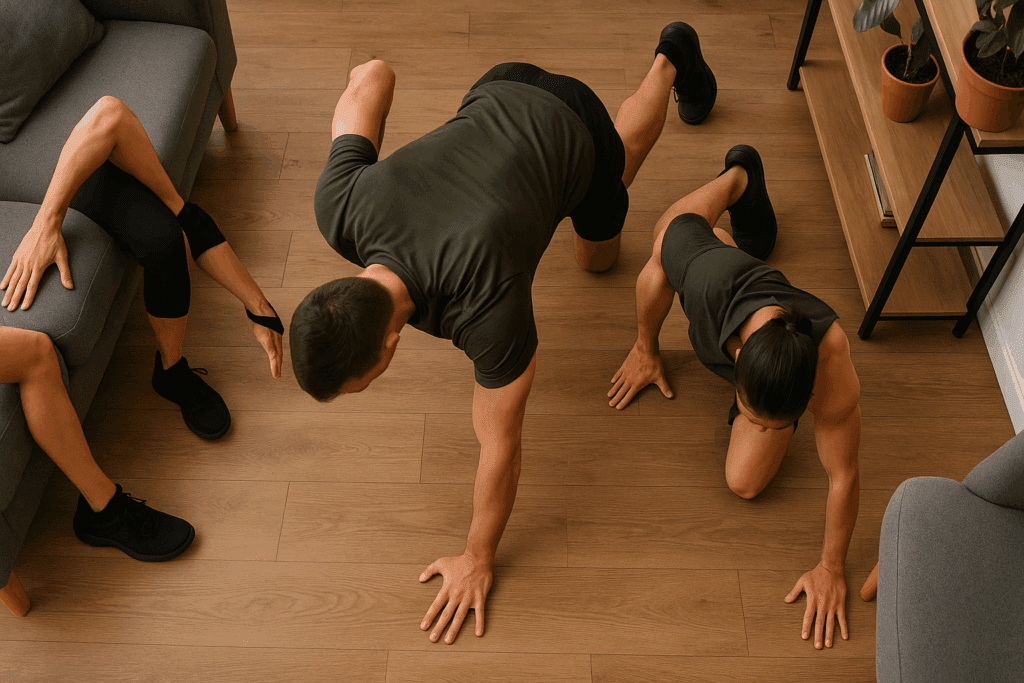
Cardio Without Compromise: Equipment-Free Strategies
While exercise equipment can enhance a workout, it is by no means necessary for achieving cardiovascular success. In fact, some of the most effective limited space cardio workouts are entirely equipment-free. The emphasis here is on continuous movement, time under tension, and compound motions that engage multiple joints and muscles.
For example, a sequence of jump squats, plank jacks, and high knees performed in succession can generate significant cardiovascular stress, triggering adaptations that enhance stamina and metabolic function. These types of routines eliminate the need for setup time, storage space, or mechanical maintenance, making them ideal for urban dwellers or frequent travelers.
Furthermore, the absence of equipment often forces practitioners to focus more on form, breathing, and tempo—elements that contribute greatly to the overall quality of the workout. This inward focus not only minimizes injury risk but also cultivates a deeper mind-body connection, aligning with performance enhancement goals that extend beyond mere physical metrics.
Incorporating Functional Movement Patterns for Lasting Benefits
Functional movement involves patterns that mimic everyday actions—like bending, twisting, lifting, and reaching—and are crucial for both athletic performance and daily life. Integrating these patterns into limited space cardio workouts enhances their utility and effectiveness. Movements such as squat-to-stand, lateral lunges, and bear crawls challenge balance, coordination, and joint mobility while sustaining aerobic intensity.
Functional aerobic exercise in small space settings also aids in injury prevention by reinforcing muscular coordination and stability. For instance, dynamic single-leg exercises can help correct asymmetries and improve proprioception, particularly beneficial for older adults or those recovering from injury. This aspect of training bridges the gap between traditional fitness and real-world physical demands, underscoring the holistic value of small-space cardio.
Additionally, functional patterns can be seamlessly blended into high-repetition sequences or short circuits, allowing for both endurance and strength development within the same session. This multifaceted approach promotes efficiency and diversity in training, keeping workouts engaging and sustainable over time.
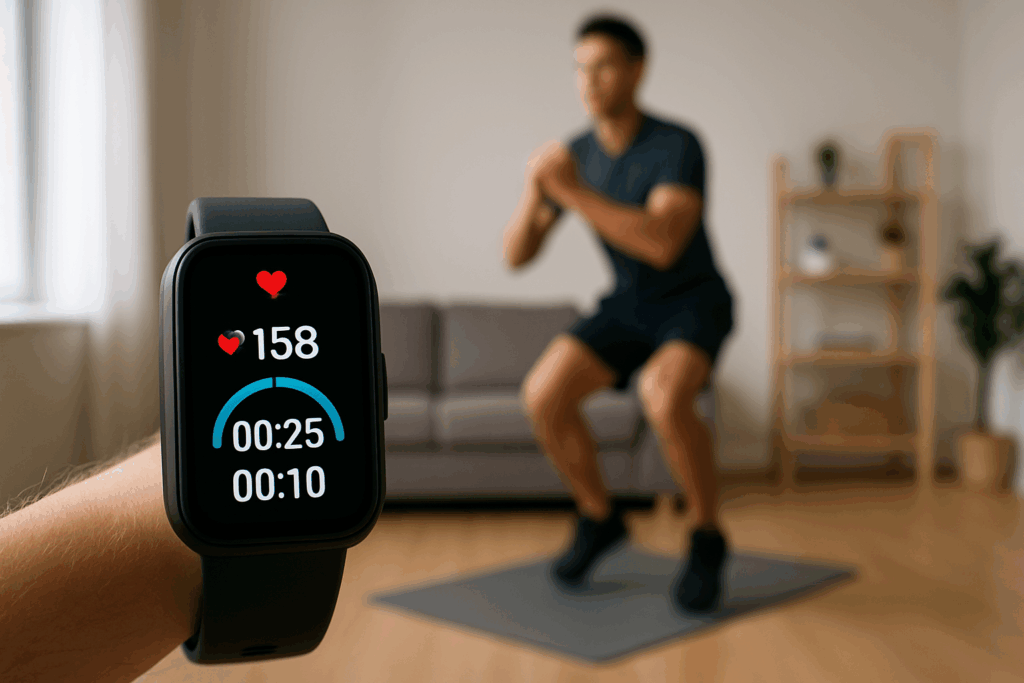
The Role of Interval Training in Space-Constrained Environments
High-intensity interval training (HIIT) has emerged as a cornerstone of modern fitness, and for good reason. It allows individuals to achieve significant cardiovascular and metabolic benefits in a fraction of the time required by steady-state cardio. When applied in small spaces, HIIT becomes a powerful tool for maximizing results without exceeding spatial limitations.
In these routines, short bursts of intense effort are interspersed with periods of active rest or lower-intensity movement. This format is ideal for limited space cardio workouts because it emphasizes quality over quantity and reduces the need for extensive movement. Examples include 30 seconds of squat jumps followed by 30 seconds of step taps or jogging in place.
Scientific studies have shown that even four to seven minutes of true HIIT can improve insulin sensitivity, cardiac output, and aerobic capacity. This makes it a suitable choice for busy individuals who want to optimize their health within the confines of their home or office. Furthermore, the variability inherent in interval training keeps both the body and mind engaged, reducing the monotony that can come with repeated routines.
Mental and Emotional Benefits of Small-Space Cardio
Cardiovascular training is often celebrated for its physical advantages, but the mental and emotional gains are equally important. Regular aerobic exercise stimulates the release of endorphins, improves cognitive function, and enhances mood regulation. These effects are particularly valuable in confined environments, where feelings of restlessness or isolation may arise.
Limited space cardio workouts provide a practical means of releasing pent-up energy and managing stress, especially for those who spend long hours indoors. The act of moving rhythmically and elevating heart rate can serve as a meditative anchor, fostering mindfulness and emotional clarity. When performed consistently, such workouts can play a pivotal role in mental well-being, complementing other wellness strategies like sleep hygiene and nutrition.
Moreover, the sense of accomplishment that comes from completing a challenging workout in a small space can enhance self-efficacy and motivation. This psychological reinforcement encourages long-term adherence and positions exercise as a source of empowerment rather than obligation. It’s a subtle yet powerful shift in mindset that transforms how we perceive our environment and our ability to thrive within it.
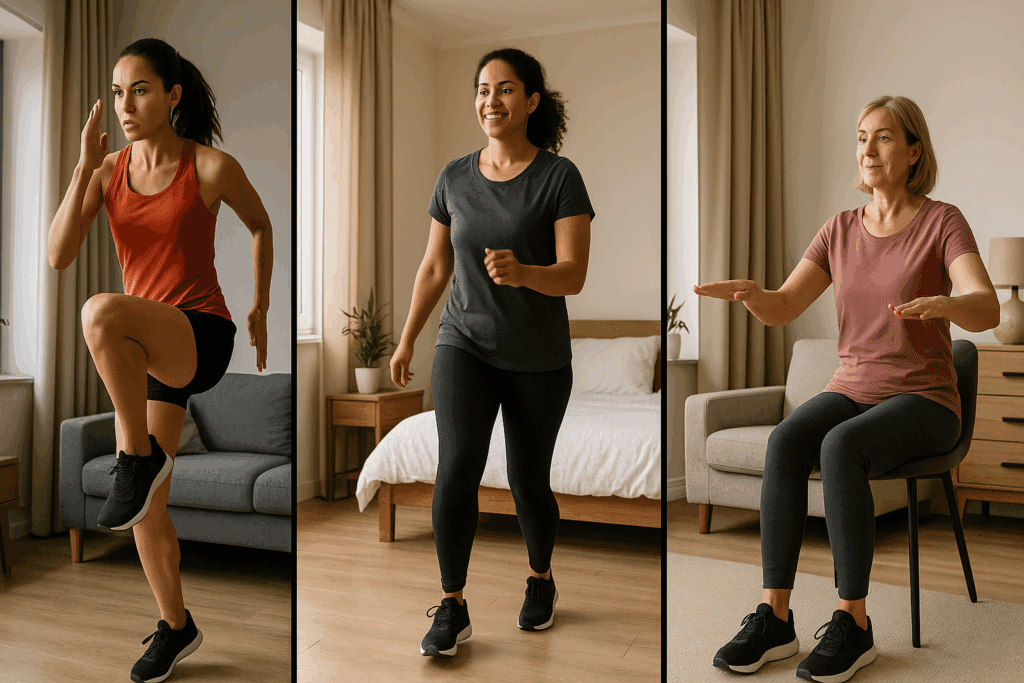
Tailoring Cardio Routines for Specific Goals and Limitations
Not all cardio workouts are created equal, and personalization is key to maximizing results. Whether the goal is fat loss, endurance building, or stress relief, workouts should be tailored to the individual’s objectives, fitness level, and physical limitations. Small-space routines are inherently flexible, making them suitable for customization.
For weight loss, circuits that emphasize high repetition and minimal rest can create a metabolic afterburn effect that continues to burn calories post-exercise. For endurance, steady-paced movements like shadowboxing or step-touch sequences can sustain heart rate over longer durations without inducing fatigue. Those recovering from injury might focus on low-impact, joint-friendly movements such as marching in place, chair aerobics, or gentle core activations.
Personalizing the routine also involves considering time of day, available space, and energy levels. Morning routines might prioritize energizing movements and light plyometrics, while evening sessions could incorporate slower, breath-focused exercises to wind down. By honoring the body’s signals and environmental conditions, individuals can create sustainable, goal-aligned workouts that consistently yield positive results.
Frequently Asked Questions: Cardio Workouts in Small Spaces
Can small-space cardio workouts be as effective as gym-based training? Absolutely. The effectiveness of any workout hinges more on the intensity, consistency, and structure than on the location or equipment. Limited space cardio workouts can be highly efficient when designed with focused, compound movements that elevate heart rate and sustain energy output. Unlike many gym-based routines that rely heavily on machines, aerobic exercise in small space settings often demands greater body awareness and coordination, which can enhance neuromuscular efficiency. Additionally, working out in familiar home environments may reduce psychological barriers, making long-term adherence more likely, which is ultimately the most critical factor for cardiovascular health improvement.
What are some creative ways to keep small-space workouts engaging over time? One of the primary challenges with cardio workouts in small spaces is avoiding monotony. To combat this, rotating through themed workout days—such as balance training, tempo intervals, or agility drills—can provide variety without requiring new equipment. Incorporating elements like dance-inspired sequences or virtual fitness challenges introduces novelty and excitement. Apps and streaming platforms now offer guided routines tailored for aerobic exercise in small space environments, giving users access to evolving programming and community support. Keeping track of personal milestones or experimenting with time trials can also inject new motivation into familiar surroundings.
How can I prevent overuse injuries when training in confined spaces? In smaller environments, it’s easy to fall into repetitive motion patterns that stress specific joints or muscle groups. A balanced limited space cardio workout should alternate between high-impact and low-impact days to allow recovery. Incorporating dynamic stretching and joint mobility exercises before each session is especially important in tight quarters, where your range of motion may already be somewhat restricted. Changing movement planes—such as shifting from sagittal (forward and back) to frontal (side to side)—can help distribute physical stress more evenly. Listening to your body and programming intentional rest intervals will significantly reduce injury risk.
What are the best strategies for warming up and cooling down in small spaces? A proper warm-up is essential even when the workout itself is low-tech and spatially minimal. Start with light aerobic movements like toe taps, shoulder rolls, and marching in place to increase circulation. Follow this with controlled mobility drills like hip openers and thoracic rotations, which are particularly useful for prepping the joints for complex movement patterns in limited space cardio workouts. For the cool-down, transition into slower-paced activity such as walking in place, followed by static stretching that targets hamstrings, calves, and hip flexors. Adding breathwork at the end of your session helps promote parasympathetic nervous system activation, supporting recovery and emotional regulation.
Can small-space cardio help improve mental clarity and focus? Yes, and often more quickly than many people expect. Aerobic exercise in small space routines, particularly when done regularly, can enhance executive function, working memory, and emotional resilience. The consistent flow of oxygen-rich blood to the brain improves neural connectivity and reduces inflammation, contributing to sharper mental performance. Furthermore, the constraints of a confined workout space can actually improve focus by minimizing external distractions, allowing users to fully engage in the present moment. Integrating mindfulness techniques such as breath-synchronized movement or rhythmic music can further deepen this cognitive benefit.
How do I adapt a cardio routine in a small space if I live with others or have noise constraints? Quiet, low-impact routines are key for shared living environments or multi-unit housing. Swap jumping for step-based alternatives like step-touches or heel digs, and avoid exercises that involve pounding the floor. Many cardio workouts in small spaces can be adapted to include resistance bands, sliders, or yoga-style movements to reduce noise while still maintaining elevated heart rates. Working out during off-hours or using a mat for shock absorption can further reduce disruption. Communicating with housemates or neighbors about your schedule can also prevent misunderstandings and build a supportive environment for your health goals.
What role does breath control play in small-space aerobic workouts? Breath control is an often overlooked component of cardiovascular training, yet it plays a foundational role in performance and endurance. In a limited space cardio workout, the absence of forward momentum or external airflow from outdoor settings means you must be even more mindful of respiratory patterns. Using diaphragmatic breathing during rest intervals can accelerate recovery and enhance oxygen exchange. Breath pacing—synchronizing inhales and exhales with movement—also helps regulate rhythm and reduce perceived exertion. Over time, cultivating conscious breathwork can significantly improve your stamina and stress resilience during high-effort sets.
Are there specific types of flooring that are better suited for cardio workouts in small spaces? Yes, flooring can greatly influence both safety and comfort. Hardwood or tile floors may be too slippery or jarring on joints unless covered with a mat or cushioned surface. Foam puzzle tiles, yoga mats, or compact foldable gym flooring provide traction and absorb impact without requiring permanent installation. For apartment dwellers, carpeted areas can help minimize noise but may impede certain movements, like sliders or fast footwork. Ideally, the flooring for aerobic exercise in small space settings should strike a balance between grip, cushioning, and stability to support a wide range of motion without promoting fatigue or injury.
How can I progressively challenge myself without expanding my workout space? Progressive overload can be achieved through intensity, duration, complexity, or recovery manipulation. For instance, shortening rest intervals while maintaining the same work output increases cardiovascular strain. Adding more complex movement sequences, such as combining a lunge with an overhead reach, boosts neuromuscular demand. Incorporating wearable weights or tempo variations can also amplify a limited space cardio workout without requiring any additional square footage. Tracking heart rate variability or perceived exertion over time gives valuable feedback for when to push harder or when to scale back, ensuring continuous adaptation and progress.
What does the future hold for small-space cardio training trends? Emerging technologies and shifting lifestyles suggest that cardio workouts in small spaces will only grow in popularity and sophistication. Virtual reality fitness, motion-sensing apps, and AI-powered personal training are already beginning to offer highly personalized programs designed for minimal spatial requirements. There’s also a growing focus on inclusivity and accessibility, with programs being tailored to accommodate aging populations or those with mobility challenges. As awareness grows around the psychological and community benefits of fitness, we can expect more hybrid models that blend solo aerobic exercise in small space settings with online social engagement or goal-tracking. In essence, spatial constraints are becoming an innovation catalyst rather than a limitation.
Final Thoughts: Building Stamina and Endurance with Smart, Small-Space Training
In an era where time, space, and resources are often limited, the ability to maintain cardiovascular fitness through small-space training is a game changer. Cardio workouts in small spaces not only fulfill essential health and performance goals but also cultivate discipline, creativity, and resilience. Through well-structured routines that utilize bodyweight movements, functional patterns, and interval formats, anyone can engage in aerobic exercise in a small space and see meaningful improvements in endurance and stamina.
The success of limited space cardio workouts lies not in grand gestures or elaborate equipment, but in the intentionality and consistency of practice. By embracing the constraints of your environment as opportunities for growth, you open the door to a more empowered, capable, and energized version of yourself. Whether you’re in a studio apartment, a hotel room, or a busy office, the ability to take ownership of your health is always within reach. Let your space work for you—not against you—and experience the transformative potential of smart, space-efficient cardio training.
Was this article helpful? Don’t let it stop with you. Share it right now with someone who needs to see it—whether it’s a friend, a colleague, or your whole network. And if staying ahead on this topic matters to you, subscribe to this publication for the most up-to-date information. You’ll get the latest insights delivered straight to you—no searching, no missing out.
Further Reading:
A List of 14 Types of Cardio Exercises to Get You Moving
20 cardio exercises to do at home with minimal equipment, from beginner to advanced

